#choose reusable options
Text
Preserving Our Blue Planet: Practical Ways to Save the Ocean
Shaina Tranquilino
November 18, 2023

The ocean, covering more than 70% of our planet's surface, is a vital ecosystem that provides us with numerous benefits. It regulates climate, absorbs carbon dioxide, and supports biodiversity. However, due to human activities, our oceans are facing unprecedented threats such as pollution, overfishing, and habitat destruction. To secure the future health of our blue planet, it is crucial for each one of us to take action. In this blog post, we will explore practical ways through which we can collectively save the ocean.
1. Reduce Plastic Consumption:
Plastics have become a major menace to marine life. By reducing plastic consumption in our everyday lives, we can significantly limit its impact on the ocean. Start by replacing single-use plastics with reusable alternatives. Opt for eco-friendly packaging when purchasing products and support businesses that prioritize sustainable practices.
2. Proper Waste Disposal:
Improper waste disposal leads to large amounts of garbage ending up in rivers or oceans through runoff. Always dispose of trash responsibly and recycle whenever possible. Participate in local beach cleanups or organize your own community cleanup events to prevent litter from reaching the ocean.
3. Support Sustainable Fishing Practices:
Overfishing has depleted fish populations worldwide and disrupted ecosystems. As responsible consumers, choose sustainably sourced seafood certified by organizations such as the Marine Stewardship Council (MSC). Educate yourself about sustainable fishing practices and advocate for their implementation within your community.
4. Minimize Chemical Usage:
Toxic chemicals from household cleaning products, fertilizers, and pesticides often find their way into rivers and eventually reach the ocean through runoff. Opt for environmentally friendly alternatives or make your own natural cleaners using ingredients like vinegar and baking soda. Embrace organic gardening methods that rely less on chemical inputs.
5. Conserve Water:
Conserving water not only helps preserve this precious resource but also prevents excessive runoff of pollutants into waterways. Reduce your water consumption by fixing leaks, taking shorter showers, and installing water-efficient appliances. This way, you can indirectly contribute to the health of our oceans.
6. Support Marine Conservation Organizations:
Numerous organizations tirelessly work towards protecting and restoring our oceans. Consider supporting their efforts through donations, volunteering, or raising awareness about their initiatives on social media platforms. Collaborate with like-minded individuals in your community to organize fundraisers or educational events centred around marine conservation.
7. Educate Yourself and Others:
Increasing awareness is key to saving the ocean. Stay informed about current environmental issues affecting the ocean's health and share this knowledge with others. Engage in conversations, use social media platforms as a tool for spreading awareness, and support educational programs focused on marine conservation in local schools and communities.
Saving the ocean requires collective action from individuals, communities, governments, and businesses alike. By implementing these practical steps in our daily lives, we can significantly reduce our impact on the fragile ecosystems that lie beneath the waves. Let us remember that even small changes can make a big difference when it comes to preserving our blue planet for generations to come. Together, we have the power to protect and restore our magnificent oceans – an invaluable treasure worth fighting for.
#save our oceans#ocean conservation#protect our seas#clean sea initiative#sustainable living#reduce plastic waste#marine life protection#save marine ecosystems#beach clean up#preserve our oceans#ecofriendly choices#go green for the ocean#conserve water#choose reusable options#support ocean organizations#educate for change
5 notes
·
View notes
Note
Hey I just got my first period and I'm so fucking dysphoric about it what do I do I'm so confused I feel like shit and my dysphoria is through the roof
Lee says:
I would start off by exploring your menstrual product options which can make it easier to cope with having your period.
Period underwear is probably the easiest product to use because you already know how to wear underwear so you don't have to worry about putting it on wrong. Period underwear has built-in absorbent layers and is reusable and discreet to wear, but some people might feel self-conscious about washing them at the end of the day if they aren't used to washing their own underwear and don't have a private bathroom, or they might have dysphoria about washing them. You will likely need more than one pair (at least 2 pairs) even if you wash them daily because they need to dry, so there's a bit of an up-front cost but then since they're reusable it can be cheaper than pads and tampons in the long run.
The step below period underwear in terms of usability is probably pads. They tend to be pretty easy to use and also don't require insertion into the body, but if you don't place them right sometimes blood can leak around the edges where the pad isn't. Another placement issue might come up if you wear some styles of men's underwear, like boxers, it can be hard to use pads unless you wear a different type of underwear underneath which can feel bulky. Similarly to period underwear, blood on pads might feel more noticeable than internal options, which might increase dysphoria for some. You will need to buy pads over and over, so even they aren't that expensive to buy, the cost of buying them can add up. If your family buys the pads for you or you can get them at school for free then that isn't a big of a deal, but it does matter for some people.
Some trans people swear by menstrual cups because they're reusable and cost-effective. Once inserted correctly, they can be worn for up to 12 hours depending on flow, and the feeling of the blood can be less noticeable than pads or period underwear since it's not coming out. It can also be useful if you like swimming or have swimming classes, and/or if you're in a situation where you're stealth and have access to a private bathroom to wash the menstrual cup but don't feel like you can hide a whole package of pads in your stuff. But it can be hard to find the right size/model sometimes, so it can require multiple different brands and sizes to get the one that works best for you. Some people find the feeling of wearing one uncomfortable, have a hard time with the insertion, worry it'll affect their IUD, etc.
Tampons and menstrual discs have similar pros and cons as menstrual cups, although tampons are not reusable and some menstrual discs are. In all three cases, the process of insertion can be dysphoria-inducing for some trans individuals, but you also have the benefits of not having to feel the blood. You will also have more security to avoid leaks since you could choose to wear a tampon/menstrual cup/menstrual disc and then also wear a pad or menstrual underwear as backup.
After you've figured out what products work for you, I'd switch gears to the long game which is trying to stop your period in a healthy way. If you're out as trans, talk to your guardians and doctors about trying puberty blockers or using birth control to stop your period.
If you're not out as trans, you can still try convincing your parents to take you to the doctor to discuss the use of birth control in stopping your period without mentioning gender dysphoria:
You could say you have a heavy flow and starting birth control will make it lighter
It can help with anemia because you aren’t losing any iron through your period blood if you don’t get your period
You could say your friend/s have done it and it helped them
To stop period related cramping and pain
You could say you have gross period side-effects (like diarrhea and more farting) for the week of your period
It can make your periods more regular (or make it so you can control when it happens so you’re not caught off guard)
Helps with PMSing so you don’t have to deal with any of that
It’s more convenient and you don’t have to remember to change your pad/tampon
If you’re disabled, it can help save spoons and effort and make your week easier
You may not be able to change your pads regularly if you’re disabled and that’s kinda unsanitary and the pads can break so stopping your period can help with that type of stress
Save money on pads/tampons
Save time having to use pads/tampons and keep visiting the bathroom during class
It can help with migraines if you get headaches or migraines near your period
It can help with PCOS, PMDD, and endometriosis if you have any of those conditions
It might lower your risk of ovarian and endometrial cancer (but increase your risk of breast cancer) so that's something to discuss with a doctor based on your family history and personal risk factor
If you swim, it’s better to not have your period (And it’s inconvenient for athletes in general)
It can help regulate your mood (especially if you’re mentally ill and find mood fluctuations around your period hard to handle)
Why have a period when you can not have one? Some people feel there are no positive things about having a period because they feel it is inconvenient/[insert personal adjectives]
It’s pretty safe and many people do it, and if your doctor prescribes it and monitors you then there’s not a big risk in it
How do I talk about birth control with my dad?
Here’s a NY Times article called “For the Teen Who No Longer Wants a Period”, I’d start the conversation by sending them that link then if they ask more, give them the excuses above!
Finally, there are coping strategies that you can explore to manage the feelings of dysphoria that you may experience when you have your period-- this post has more info on that.
Followers, any advice for anon?
115 notes
·
View notes
Text
Tutorial for @mimssides
How I draw with alcohol markers. Beginner edition
First off all I want to specify: this is based on my experience only, so take it with caution. This is also my first tutorial ever.
1) Have an underpaper.
Unless you use some really thick paper, markers will bleed on your next page or table ( depending if you're drawing in a sketchbook or not). I recommend to have one list of some decent paper under the page you're drawing on. Decent means thicker than office paper, can be watercolor paper, it usually perfect for it. It's reusable and over the years mine two look like this:

( you can see there's a lot of stuff going on there)
2) Always, and I mean ALWAYS erase your sketch.
If you're doing a quick try out of color combinations you can skip this step, because you don't need the aesthetic or anything. I'm not sure how useful this tip is for colored pencils ( cuz I never sketch with those), but with regular graphite pencil it's very much important. Graphite smudges your markers, and not only that. It also gets trapped if you go over it with a marker, meaning you wouldn't be able to erase it and it's going to leave you with gray smudges all over. Truly awful.
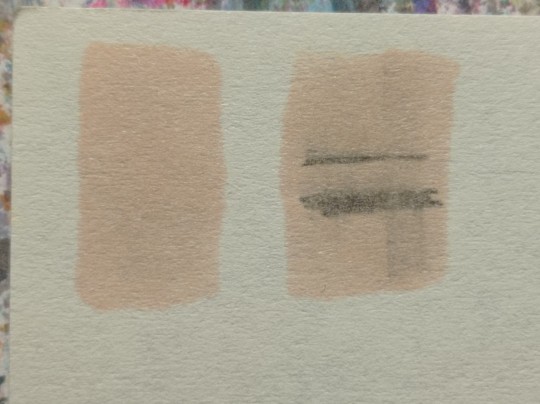
3) Have your pallets on the same paper you draw on. Or simply - have pallets!
Colors can show differently on different paper, that's why it's important to do color swatches once you buy your markers. They are designed for specific paper, and on your paper they can look a lot darker or really pale. I recommend testing colors before you buy them, it's usually an option in the most craft stores. If you're buying a set just take 30 minutes to do all the swatches and naming them. It also helps visually to see what colors you have.
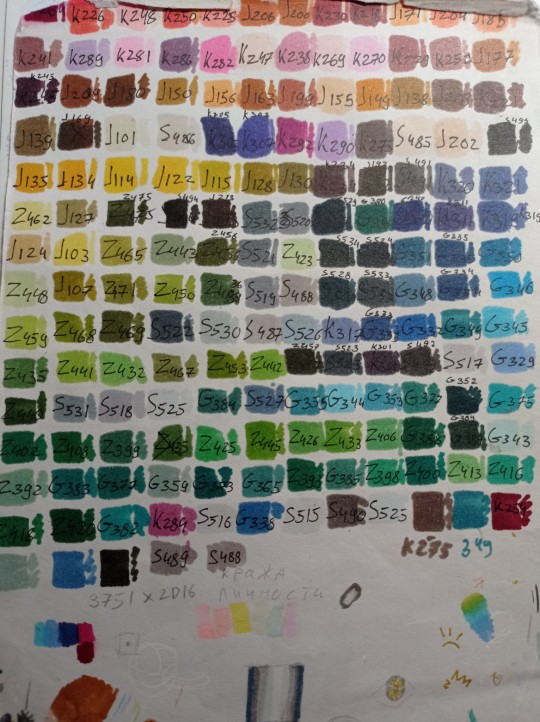
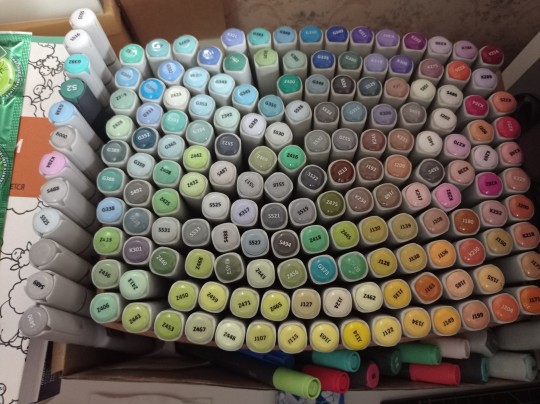
(I have a lot, but you don't need as much, there's like 60 colors I use usually and the rest are on rare occasions. Build a set you're comfortable with)
4) Make sure your materials all work together.
We already talked about graphite swatches, not the worst thing that can happen to you. Mainly you need to make sure how your materials work together, how they lay on top of each other. Make sure your lineart won't react to your markers, there's special waterproof liners and those are the best for markers ( mine are Pigma Micron from Sakura). See how your pens and liners act before and after you apply markers.

Decide which is better to use before and which after markers
5) No black.
I don't use black in any of my drawings. All you see is different shades of gray. It looks much more pleasant with the rest of the colors and it allows for my lineart to be visible underneath. Sometimes even those grays are too dark and I need to add more shades or white lineart to fix it

6) How to shade.
This is a very subjective thing to talk about. You can shade how you want. I will talk about two ways I shade.
1. Same marker. Markers dry. And when they do you can go over them another time. Usually that makes a darker shade of the same color and it's a pretty safe way to do the shading if you don't know which colors can go together. It doesn't work as well on the light colors and difference can be barely noticeable. It's a nice way to get soft shading
2. The pure chaos. Just kidding... Different color marker. It's hard to explain, and yo always need to test what works for you. If you want sharper shade you need to grab a different color, can be from the same hue ( for yellow - orange, for red - burgundy) or something a little more spicy. You can add different hues to your colors with different shades ( your black with red shades is suddenly looks burgundy, or purple, or blue). Experiment! Fail! Find out which combinations work and which don't!
If color seems a little darker than you expect you can go over it with original color, which might lighten it up. This tip doesn't always work

7) How to do gradients.
1. Choose your colors beforehand, see how well they work together. It's easy to do a gradient from red to pink, but not so much from orange to blue. You might need to choose lighter colors, because if you want smooth transition from one color to another you will need to go over them a couple of times and that will darken them.
2. Add a middle color. Not every gradient needs a middle color, but with it you can make your gradient much smoother, it will be more noticeable the bigger aria you cover. The more middle colors you have the more harder gradients you can do

( without and with a middle color)
3. Act quickly. Markers dry relatively quickly so you need to add colors one after the other, you can't go away before you're done.
4. Blend with the lighter color. You can also start with this color as a base but that doesn't work for all color combinations. Lighter color will go in top a darker and flow into it making it lighter and transition smoother. ( example: you go from red to purple to cyan, you will need to start with red, then purple going over red to soften it, and finally the lightest cyan going over purple and maybe even a little red). You always put darkest first and go over it.
There's other methods of doing the gradients. They are very similar actually, but for second one you will need a blender. For the first one grab two markers you want to use ( more if you're feeling risky) turn one of the markers upside down and touch their tips. Now use your understanding of gravity. Color from the top marker will go into the bottom one. The longer you wait the longer the gradient will be. Usually I don't need to wait longer than 3 seconds.
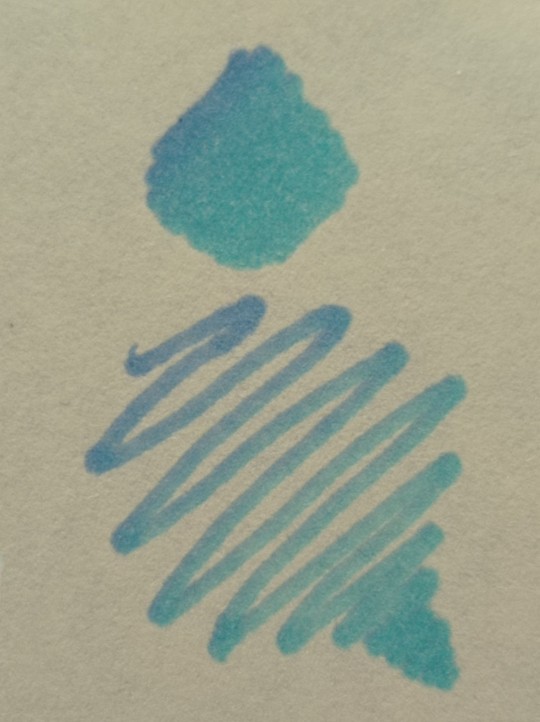
And you can do the same with a blender
8) How to use a blender.
Blender is a marker with no color. Usually it's named B000 (I recommend buying a blender with brush tip). There are many ways to use it.
Gradients: you can use two markers technique with a blender making gradient fade on one end, or you can mix colors inside the blender.
Fixing mistakes: blender will make a white show through your color, you can use it to get rid of the wrong color. But it doesn't work without some problems. Of course darker colors will likely stay, even if much lighter, and your previous color will try to flee ( likely to other sides, if you're lucky it will go on your underpaper)

That's all I have for you today. Experiment and learn something new. Hope that helps
112 notes
·
View notes
Photo

If you menstruate and are on a path of zero-waste, avoiding plastics, avoiding toxic chemicals, minimizing your footprint, or all of the above, then you’ve likely been faced with a frustrating conundrum: Menstruating is a natural part of your life, but there doesn’t seem to be too many ‘clean’, safe options to deal with it.
First off, let me say that I have been off and away from mainstream menstrual care for over 14 years, including birth control (wrecked my hormones), and storebought sanitary products (full of harmful chemicals like bleach, perfume and hormone-disrupting PFAs!). I have used silicone cups, discs, and cloth pads, and have a lengthy and thorough review of how they are used and what brands I prefer up on my Patreon.
However, for today I want to focus on one tried and true item: The pad.
Pads have been around for centuries- longer if you include their earlier predecessor, The Rag. However, in this time we’ve come pretty far to create a more secure, clean and manageable item— though the creation of the chemically-treated, plastic lined disposable pad has been a regrettable pit stop.
Cloth pads are great because they come in a wide range of colors and patterns (making them more appropriate for more kinds of menstruating people, including men and children) and can be reused for years if cared for properly. Over the past decade, they’ve gone from being available solely from independent sellers on sites like Etsy to being sold alongside menstrual cups in the ‘alternative’ period care section of many stores. You can also specifically buy pads made from organic or natural materials and avoid petrol-based textiles.
However, a downside here is that purchasing pads can still be expensive even if you aren’t buying direct from an indie seller. Now, it’s not that they aren’t worth every penny; having made 3 sets myself I fully understand the time, skill and materials that go into making them. But the fact of the matter is that under late-stage capitalism, paying the higher up-front cost for a set of reusable pads can be daunting, even if you know it’s cheaper in the long run (and it is).
If you have access to fabric, a sewing machine, and sewing skills, you can half the price, and I’m going to show you how. The cost of fabric can even be lowered by recycling old towels and clothing and I’ll talk about what you need in the tutorial! As a set of good cloth pads can last from 4-6 years or more, this is a great, frugal and eco-friendly option!
Additionally, I’m going to tell you how to wash and care for your pads since working with reusable pads is way different than just wrapping them up and throwing them in the trash.
For the step by step directions, photos and care tutorial, click here to read for free on my Patreon. All of my content is Patron-supported and Patrons also receive private and early-release posts! If you appreciate my work, feel free to visit my membership page and choose the tier that works for you.
Free tutorial here.
Tips + Thank yous
Insta
449 notes
·
View notes
Text

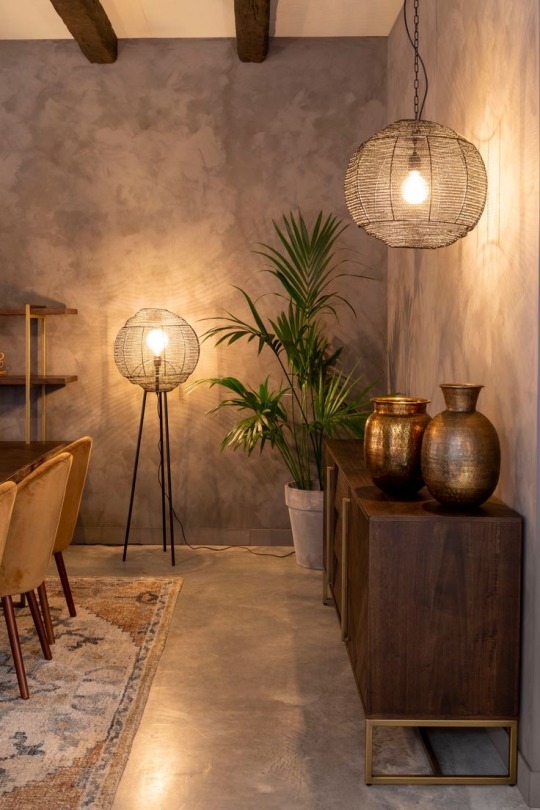
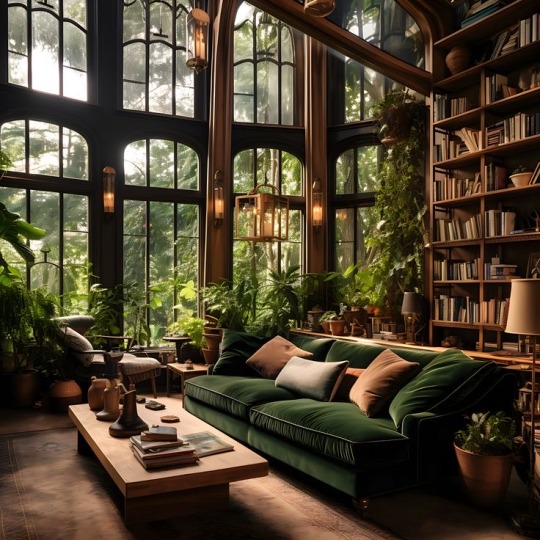
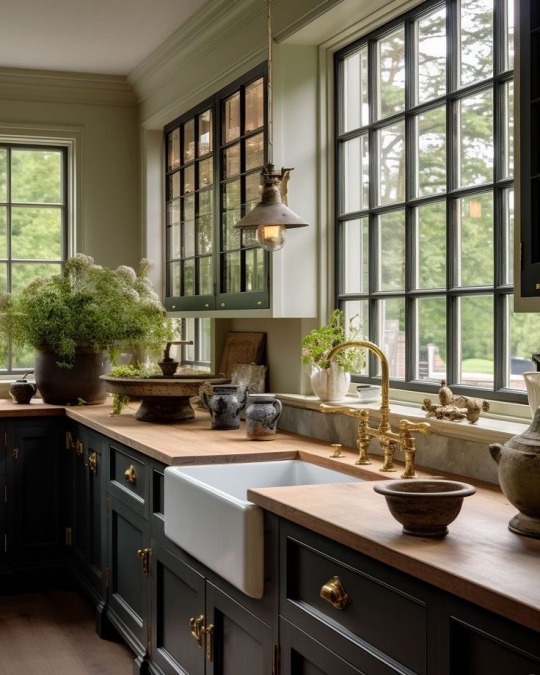
Ways to practice eco-friendly living in your home
1. Reduce energy consumption:
- Install energy-efficient appliances and LED light bulbs.
- Turn off lights and unplug electronics when not in use.
- Use natural light as much as possible.
- Set your thermostat to a lower temperature in winter and higher in summer.
- Insulate your home properly to reduce heating and cooling needs.
2. Save water:
- Fix any leaks in faucets and toilets promptly.
- Install low-flow showerheads and faucets.
- Collect rainwater for watering plants.
- Only run the dishwasher and washing machine with full loads.
- Use a broom instead of a hose to clean outdoor spaces.
3. Practice waste reduction:
- Recycle paper, plastic, glass, and metal.
- Compost kitchen scraps and yard waste.
- Opt for reusable products instead of disposable ones (e.g., cloth napkins, rechargeable batteries).
- Avoid single-use plastics, such as plastic bags and water bottles.
- Use a reusable shopping bag.
4. Use eco-friendly cleaning products:
- Choose natural, non-toxic cleaning products or make your own using ingredients like vinegar, baking soda, and lemon juice.
- Avoid products containing harmful chemicals that can harm the environment and your health.
5. Grow your own food:
- Plant a garden to grow vegetables, fruits, and herbs.
- Use organic and natural fertilizers instead of synthetic ones.
- Compost food scraps to enrich the soil.
6. Opt for sustainable materials:
- Choose furniture made from sustainable materials like bamboo or reclaimed wood.
- Use eco-friendly flooring options like bamboo, cork, or reclaimed hardwood.
- Select paint and other finishes that have low or no volatile organic compounds (VOCs).
7. Reduce plastic waste in the kitchen:
- Use glass or stainless-steel containers for food storage instead of plastic.
- Replace plastic wrap with beeswax wraps or reusable silicone covers.
- Use refillable water bottles and avoid buying bottled water.
8. Conserve energy in the kitchen:
- Use energy-efficient appliances.
- Cook with lids on pots and pans to retain heat and reduce cooking time.
- Opt for smaller appliances like toaster ovens instead of full-sized ovens when possible.
9. Encourage sustainable transportation:
- Use public transportation, walk, or bike whenever possible.
- Carpool or arrange a car-sharing service with neighbors or colleagues.
- Transition to an electric or hybrid vehicle if feasible.
10. Educate and involve your family:
- Teach your family about the importance of eco-friendly practices and involve them in the decision-making process.
- Encourage everyone to adopt sustainable habits and lead by example.
- Discuss environmental issues and brainstorm new ideas for greener living.
#home improvement#work from home#make money from home#homebrew#ecology#ecofriendly#sustainability#home design#home#acne treatment#homedesign#homemade#home decor#home business#home & lifestyle#homestuck#welcome home#homens de sunga#homeinterior#homestyle#cozyplaces#cozy glow#cozyhome#cozy cozy#cozy living#cozyvibes#cozy autumn#cozy fall#cozy mystery#cozycore
85 notes
·
View notes
Text
self care kit for regressors
be gentle with yourself little ones
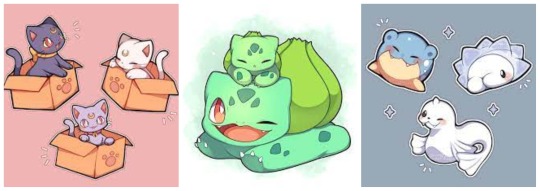
hi! i'm in college and i'm researching things to put in a self care box for midterms and finals next semester because my first semester as a college freshman was not it
here's what i found for all my friends <3
this is a long post, get comfy friends
this post does contain links to amazon for reference/recommendations and you do not have to buy anything from there if you can't/don't want to
i found this gift box that's super cute, reusable, and you can choose any color you want. why a gift box? because self care is a gift to yourself
of course, you don't have to spend money on a gift box either! there's many tutorials on making shoe boxes, amazon boxes, and any other type of box i can't think of, to look cute and just your style.
you can also buy cheap gift boxes at walmart or target or any store you like to go to
enough of my waffling about boxes, here's the fun stuff:
emotional self-care
journal for writing down emotions and stuff. i'd recommend making a little agere journal for yourself since it's a lot of fun <;3 i use these pompts when i can't think of things
coloring books are my personal favorite, you can get nice ones for $20-$30 or a kids one of your favorite show!! here's a pack of 16 on amazon if you go through coloring books too another bulk pack(disney and other kids shows) pokemon and sanrio
colored pencils! if you don't already have some i would recommend crayola. this is what i have
cute pencil pouches!! for the colored pencils of course and they can be your favorite color or pattern <;3 this is one i've had my eye on bc it can hold 100 of those colored pencils(floral)
tissues for if you need a good cry. crying is actually super healthy and i wouldn't hold it in
optional: a paci <3 i can't use amazon and get an adult pacifier so i def recommend going to the store(on your own if you can) and get an 18m+ paci, the best for adults are 2-4 years if they sell them
physical
bath time!!:
get some yummy smelling body wash, it's nice
i have little fizzy tabs from mr. bubble and one of those is ~$5
bubbles!!
some little toys like bath crayons and rubber duckies are always fun <3
i would also invest in hair-care and skin-care if you don't already. it always makes me feels better
you can also get your favorite candy and your favorite snack for your box <3 a nice little treat for you
also, warm drinks are always fun! my favorites are angel milk(12oz milk, 1-2 tbsp sugar, a little bit of vanilla extract) and hot chocolate
and get some strong, but really good, scent. candles, scensy melts, and essential oils are perfect <3
mental
books! or if you don't like to read physical books, audiobooks. audible and libby by overdrive are good and you can color while you listen!!!
little puzzles or fidgets are also nice. my favrite at the moment are the little clicker toys(i like the noise) and pop-its
allow yourself to relax a bit with your favorite show!! write down a list of your favorites and put it in the self-care box, then you won't have too much trouble picking what to watch
these are all things that sound appealing to me so definitely look out for yourself and what you like. these are just suggestions that i wanted to share with you guys!!
be safe and take care of yourselves
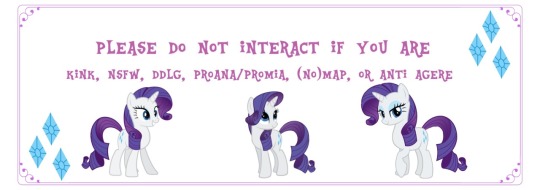
#🦄💎🔮 thena gives advice 🔮💎🦄#✨🪞 self-care tips 🪞✨#💫 helpful tips 💫#agere comfort#age dreaming#age regression blog#age regression community#age regressor#agere#agere community#agere lifestyle#agere little#agere positivity#sfw age dreamer#sfw agere#sfw agere blog#sfw little#sfw little things#please be kind
503 notes
·
View notes
Text
How to start new healthy habits ?
Start Small and Specific:
Don't overwhelm yourself with trying to change everything at once. Begin with a tiny, SMART goal (Specific, Measurable, Achievable, Relevant, and Time-bound) that you can easily integrate into your daily routine.
For example, instead of a vague goal of "eating healthier," aim for "adding one serving of vegetables to each lunch this week."
Celebrate these small wins – they pave the way for bigger changes and build confidence.
2. Find the Fun Factor:
Make it enjoyable! Habit formation is easier when you're doing something you genuinely like. Explore different healthy options – yoga, swimming, dancing, or trying a new fruit.
Choose activities that fit your personality and interests, making it more likely you'll stick with them in the long run.
3. Habit Stacking:
Pair new habits with existing ones to make them feel seamless. This leverages the power of routine and reduces the mental effort required to start a new habit.
For example, do jumping jacks while waiting for your coffee to brew, follow brushing your teeth with some body stretches, or listen to an educational podcast while walking.
4. Schedule for Success:
Block out specific times in your routine for your new healthy habits and stick to them as much as possible. Consistency is key for building habits.
A morning meditation session before work, a post-dinner walk, or a pre-bed relaxation routine become second nature over time.
5. Prep Makes Perfect:
Be proactive and remove potential roadblocks!
Pre-portion healthy snacks to avoid temptations. Lay out workout clothes the night before.
If you're aiming to drink more water, keep a reusable water bottle with you throughout the day.
6. Focus on Progress, Not Perfection:
Building new habits takes time and effort. Don't get discouraged by setbacks or slip-ups. Everyone makes mistakes.
View setbacks as temporary bumps and recommit to your goals. Celebrate your progress, no matter how small.
Reward yourself for sticking with your goals: a relaxing bath after workouts or a new book for sticking to mindful eating.
7. Track Your Progress:
There are apps and habit trackers available to help you monitor your progress and stay motivated. Visualizing your success with streaks or charts can be a great motivator.
8. Find a Support System:
Tell friends or family about your goals. Having an accountability partner can boost motivation and offer encouragement.
You can also join online communities or forums focused on healthy living to connect with others on a similar journey.
follow me fore more
#self care#positive mental attitude#productivity#weight management#i need to lose this weight#self improvement#healthy diet#nutrition#health and nutrition#self discovery#workout#gratitude#healing#be kind to yourself#empowerment#growth#boundaries#healing journey#kindness#positive thinking#glow up#it girl energy#optimism#self healing#psychology#self respect#self growth#coqeutte#wellness girl#pink academia
13 notes
·
View notes
Text
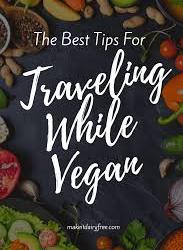
Summer is just around the corner and that means trips away ! Here are some of my favourite travel tips i find helpful while being vegan
Research Vegan-Friendly Destinations:
Look for destinations known for their vegan-friendly food options, such as major cities like Los Angeles, London, Berlin, and Bangkok.
Consider countries with a strong tradition of plant-based cuisine, such as India, Thailand, and Ethiopia.
Use vegan travel guides, websites, and social media platforms to discover hidden gems and local favorites.
Explore Vegan Restaurants and Cafés:
Use apps like HappyCow, Yelp, or TripAdvisor to find vegan and vegan-friendly restaurants in your destination.
Seek out local vegan eateries, vegetarian restaurants, and health food stores for a variety of plant-based dining options.
Look for restaurants with clearly labeled vegan menus or options to make ordering easier.
Accommodations with Vegan Options:
Choose vegan-friendly accommodations such as hotels, hostels, or guesthouses that offer plant-based meal options or cater to dietary preferences.
Consider booking accommodations with kitchen facilities to prepare your own meals using local ingredients.
Look for eco-friendly and sustainable accommodations that align with your values, such as vegan resorts or eco-lodges.
Connect with Local Vegans:
Reach out to local vegan communities or social media groups in your destination for insider tips and recommendations.
Attend vegan meetups, events, or food tours to connect with like-minded travelers and locals.
Follow vegan influencers and bloggers who share their experiences and recommendations for vegan-friendly travel.
Pack Vegan Snacks and Essentials:
Bring along vegan snacks, protein bars, and non-perishable food items for times when vegan options may be limited.
Carry a reusable water bottle and utensils to reduce waste and stay hydrated while traveling.
Research local vegan-friendly markets and grocery stores to stock up on fresh produce, snacks, and ingredients.
Be Prepared and Flexible:
Be open-minded and flexible when dining out, as vegan options may vary depending on the destination and local cuisine.
Learn basic phrases in the local language to communicate dietary preferences and ask questions about ingredients.
Plan ahead and make reservations at vegan or vegan-friendly restaurants, especially during peak travel seasons.
14 notes
·
View notes
Text
Small Steps, Big Impact: Your Guide to Living Sustainably
Climate change can feel like an overwhelming issue, but the good news is, everyone can make a difference! Even small changes in our daily lives can significantly reduce our carbon footprint and contribute to a healthier planet. Here are some actionable tips to get you started on your sustainability journey:
At Home:
Power Down: Electronics continue to consume energy even on standby. Get in the habit of turning off lights, appliances, and electronics when not in use. Power strips with on/off switches make this even easier!
Embrace Energy Efficiency: Swap traditional incandescent bulbs for energy-efficient LEDs. Consider switching to energy-star rated appliances when yours reach the end of their lifespan.
Wash Smarter: Launder clothes with cold water whenever possible and air-dry them instead of using the dryer.
Thermostat Tweaks: Adjust your thermostat a few degrees in summer (up) and winter (down) to save energy on heating and cooling.
On the Go:
Think Green Transportation: Walk, bike, or use public transport for errands whenever possible. If you must drive, carpool or choose fuel-efficient vehicles.
Reduce, Reuse, Rethink: Carry reusable shopping bags and water bottles to avoid single-use plastics. When buying new items, prioritize quality over quantity and consider pre-owned options.
Mindful Consumption: Avoid impulse purchases and focus on buying items you truly need and will use for a long time.
Food Choices Matter:
Reduce Meat Consumption: Meat production has a significant environmental impact. Consider incorporating more plant-based meals into your diet.
Buy Local & Seasonal: Locally sourced produce reduces transportation emissions and often tastes better! Seasonal fruits and vegetables are fresher and more sustainable.
Plan Your Meals: Planning meals helps minimize food waste, which contributes to greenhouse gas emissions.
Be an Advocate:
Spread Awareness: Talk to friends and family about your sustainability efforts and encourage them to join You
Support Sustainable Businesses: Do your research and choose to support companies committed to sustainable practices.Stay Informed: Educate yourself about climate change and environmental issues.
Remember, every small step counts! By incorporating these tips into your daily routine, you can make a positive impact on the planet while inspiring others to do the same. Let's work together to build a more sustainable future for generations to come!
#nature#peaceofmind#happylife#wildlife#sustainability#lifestyle#saveearth#save energy#save environment#world wildlife fund#biodiversity#conservation
11 notes
·
View notes
Note
https://www.tumblr.com/karizard-ao3/739461903787720705/eren-would-love-to-be-a-girl-dad-to-the-four
There are no condoms in Paradis 😭😭😭 Eren does NOT believe in abstinence
I don't know. It takes two people to make a baby and I like to think Eren cares more about Mikasa's comfort and safety than getting his dick wet. Pregnancy is hard on the body and raising kids is exhausting. If she needed a break from it or didn't want any more kids, I think he would respect that, although I don't think she'd want to stop having sex. They'd probably do the best they could to avoid pregnancy by pulling out if there were no other birth control methods available.
Although, I was looking up the history of birth control due to this ask to see what options, if any, were available to people in the middle ages (pulling out, pretty much, although the Egyptians and Romans did attempt to make condoms from animal bladders) and was reminded that birth control as we know it today was developed in the late 1800s (both hormonal birth control and barrier methods), so it's actually very possible that condoms, diaphragms, and the pill exist in Marley. If Mikasa can get her hands on a diaphragm, they're all set because they are reusable.
Of course, that's not to say they wouldn't choose to have seven children (in my head they always max out at four) but I feel a lot better about it when I picture Mikasa as being involved in the choice.
10 notes
·
View notes
Text
Enough with the cheaply made, blow molded cases for every hand, power and specialty tool.... Should be an option for bare tools or with cases at least I could choose and say no thanks, don't want/don't need.
Some make sense, I use a few a lot. Some... It's for every power tool in the lineup, wrenches, screw drivers, sockets.... Most of which either get consolidated in a rolling tool box, or have organizers for garage tool drawers.
You want portability, a reusable (milwaukee) canvas tool bag/backpack works amazing.
Was sorting through my garage, my tools, dad's tools, grandpa's tools and all the shitty, disposable plastic waste that I know won't get recycled easy and will just add to the mess we push out to the environment, and it gave me a momentary anxiety attack thinking about it.
7 notes
·
View notes
Text
Sustainability in Home Decor: Tips and Tricks from an Interior Designer
As an interior designer, I am constantly thinking about how to create beautiful, functional spaces for my clients while also being mindful of the impact our choices have on the environment. Sustainability in home decor is more important than ever, and there are many ways to incorporate eco-friendly practices into your home design. Here are a few tips and tricks to get you started:
Choose sustainable materials When selecting materials for your home, look for options that are made from recycled or sustainable materials. This can include furniture made from recycled plastic, flooring made from bamboo or cork, and countertops made from recycled glass.
Opt for eco-conscious brands Support brands that are committed to sustainability and eco-friendliness. Look for companies that use recycled materials, donate to environmental causes, or have a commitment to sustainability in their manufacturing processes.
Incorporate plants Plants not only add a touch of greenery to your home, but they can also purify the air and improve your mood. Choose plants that are native to your region and easy to care for to minimize your environmental impact.
Use energy-efficient appliances Energy-efficient appliances can save you money on your energy bills and reduce your carbon footprint. Look for appliances with Energy Star certification or other energy-efficient ratings.
Practice zero waste Reduce your waste by choosing reusable items, such as fabric grocery bags, glass storage containers, and stainless steel water bottles. You can also look for home decor items made from recycled materials or that can be repurposed when you're ready to update your space.
By incorporating these sustainable practices into your home decor, you can create a beautiful, functional space while also minimizing your impact on the environment. Happy decorating!
#sustainability#home decor#eco-friendly#interior design#sustainable materials#eco-conscious#zero waste#sustainable design#sustainable interior design#sustainable#sustainable decor#design ideas blog
55 notes
·
View notes
Text
Javascript Frameworks
Absolutely, JavaScript frameworks are the backbone of modern web development, empowering developers to create robust, interactive, and responsive web applications. From Angular and React to Vue.js and beyond, these frameworks have revolutionized how we build web applications. Let's delve deeper into the world of JavaScript frameworks and explore their significance, popular choices, and their impact on web development.
Evolution of JavaScript Frameworks
JavaScript frameworks emerged to streamline the development process, offering predefined structures, libraries, and functionalities. They simplify complex tasks, making it easier to create feature-rich web applications.
Angular:
Angular, developed by Google, introduced the concept of a structured front-end framework. Its two major versions, AngularJS (1.x) and Angular (2+), introduced improvements in performance, modularity, and enhanced features like two-way data binding.
React:
React, maintained by Facebook, revolutionized front-end development with its component-based architecture. Its virtual DOM implementation significantly improved rendering efficiency, making it a go-to choice for building dynamic user interfaces.
Vue.js:
Vue.js gained popularity for its simplicity and flexibility. Its progressive framework allows developers to integrate it into existing projects seamlessly. Vue's gentle learning curve and adaptability have attracted a large community of developers.
Why Use JavaScript Frameworks?
Productivity: Frameworks provide reusable components, tools, and patterns, speeding up development.
Performance: Optimized rendering, virtual DOM, and efficient data binding contribute to faster applications.
Community Support: Active communities offer resources, libraries, and solutions to common problems.
Scalability: Frameworks often come with built-in features for scaling applications as they grow.
Choosing the Right Framework
Selecting a framework depends on project requirements, team expertise, scalability needs, and community support.
Angular: Ideal for large-scale applications requiring a complete framework solution with a structured architecture.
React: Suited for building dynamic, high-traffic applications, leveraging its virtual DOM and component-based structure.
Vue.js: A versatile choice, especially for smaller to medium-sized projects, due to its simplicity and easy integration.
The Future of JavaScript Frameworks
The landscape of JavaScript frameworks continues to evolve with updates, new releases, and the emergence of alternative frameworks. There's a trend toward optimizing performance, reducing bundle sizes, and improving developer experience.
Web Components and Micro-Frontends:
The rise of Web Components and micro-frontends is changing how developers architect applications. These technologies enable building modular, reusable components that can be utilized across frameworks and projects.
Framework Agnosticism:
Developers are exploring ways to combine different frameworks or use libraries like Svelte and Alpine.js to achieve optimal performance and flexibility while minimizing the constraints of a single framework.
Conclusion
JavaScript frameworks have significantly shaped the web development landscape, offering diverse options to cater to varying project needs. As technology evolves, the emphasis shifts towards performance, scalability, and adaptability, driving innovation in the realm of JavaScript frameworks.
Ultimately, the choice of a framework depends on the project's specific requirements, team expertise, and long-term goals. Understanding the strengths and trade-offs of each framework empowers developers to make informed decisions, ensuring the successful creation of modern, efficient web applications.
7 notes
·
View notes
Text
Top 10 Front-End Frameworks and Libraries for 2024
As the web development landscape continues to evolve, staying updated with the latest front-end frameworks and libraries is crucial for any developer. Whether you're a seasoned pro or just starting out, knowing which tools to use can significantly impact your productivity and the quality of your projects. In this post, we’ll explore the top 10 front-end frameworks and libraries that are set to dominate in 2024.
1. React
React remains one of the most popular front-end libraries, known for its simplicity and flexibility.
Key Features of React
Component-Based Architecture: Reusable components make development efficient and manageable.
Virtual DOM: Enhances performance by minimizing direct DOM manipulation.
Strong Community Support: A vast ecosystem of tools, libraries, and tutorials.
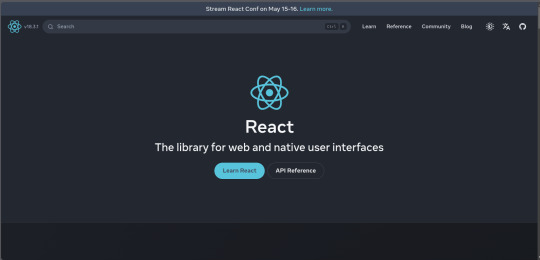
2. Angular
Angular, backed by Google, is a powerful framework for building dynamic single-page applications (SPAs).
Why Choose Angular?
Two-Way Data Binding: Synchronizes data between the model and the view.
Dependency Injection: Improves code maintainability and testability.
Comprehensive Documentation: Extensive resources for learning and troubleshooting.

3. Vue.js
Vue.js has gained popularity due to its gentle learning curve and versatility.
Advantages of Vue.js
Reactive Data Binding: Simplifies state management.
Single-File Components: Encapsulate HTML, CSS, and JavaScript in one file.
Flexibility: Can be used for both large-scale and small-scale applications.

4. Svelte
Svelte is a relatively new player that compiles components into highly efficient vanilla JavaScript at build time.
Svelte’s Standout Features
No Virtual DOM: Directly manipulates the DOM for better performance.
Less Boilerplate: Cleaner code with minimal overhead.
Ease of Use: Intuitive and straightforward syntax.
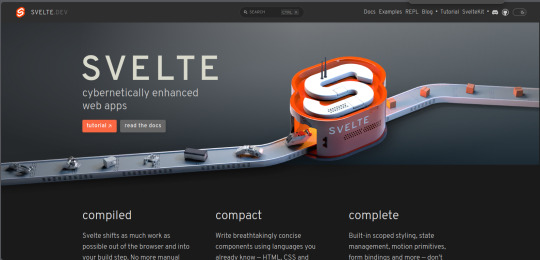
5. Bootstrap
Bootstrap is a front-end framework that provides pre-designed components and a responsive grid system.
Benefits of Using Bootstrap
Responsive Design: Ensures your site looks great on all devices.
Pre-Styled Components: Saves time with ready-to-use UI elements.
Customizable: Easily customize with Sass variables and Bootstrap’s extensive options.
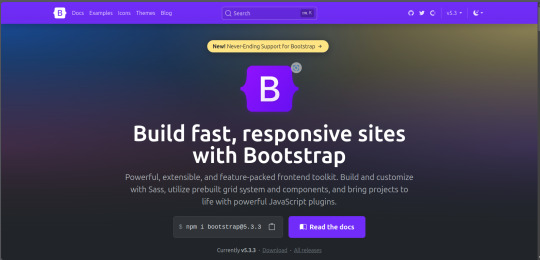
6. Tailwind CSS
Tailwind CSS is a utility-first CSS framework that allows for rapid UI development.
Tailwind CSS Features
Utility-First Approach: Use utility classes directly in your HTML.
Customizable: Extensive configuration options to suit your project’s needs.
Consistency: Enforces a consistent design language across your project.
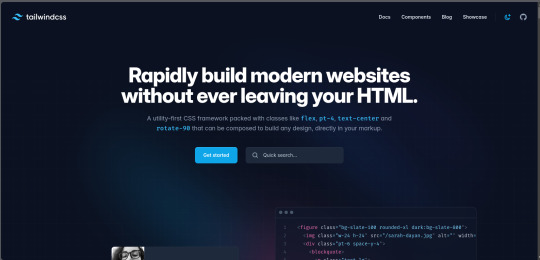
7. Ember.js
Ember.js is a robust framework for building ambitious web applications.
Why Ember.js Stands Out
Convention over Configuration: Reduces the amount of decision-making and boilerplate code.
Strong Routing: Powerful routing capabilities for managing application state.
Productivity: Focuses on developer productivity with built-in best practices.
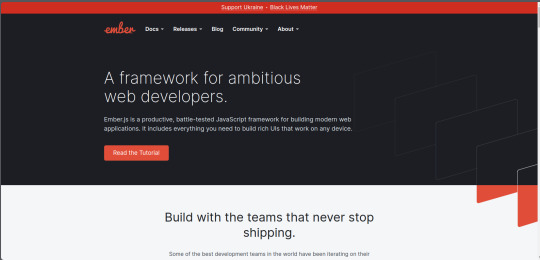
8. Alpine.js
Alpine.js offers a minimal and lightweight way to add interactivity to your websites.
Key Features of Alpine.js
Lightweight: Small footprint with only a few kilobytes.
Declarative Syntax: Similar to Vue.js, making it easy to understand and implement.
Ease of Integration: Can be easily integrated into existing projects.
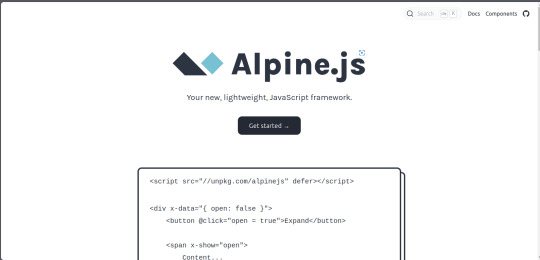
9. Next.js
Next.js is a popular React framework that enables server-side rendering and static site generation.
Benefits of Using Next.js
Server-Side Rendering (SSR): Improves performance and SEO by rendering pages on the server.
Static Site Generation (SSG): Pre-renders pages at build time for fast load times.
API Routes: Allows you to create API endpoints within your application.

10. Lit
Lit is a simple library for building fast, lightweight web components.
Advantages of Lit
Web Components: Embraces the web components standard for reusable, encapsulated HTML elements.
Performance: Lightweight and highly performant.
Simple API: Easy to learn and use with a minimal API surface.

Conclusion
Choosing the right front-end framework or library can significantly impact your workflow and the quality of your projects. Whether you prefer the flexibility of React, the structure of Angular, or the simplicity of Svelte, there's a tool out there to suit your needs.
Final Tips for Selecting a Framework or Library
Project Requirements: Consider the specific needs of your project.
Community and Support: Look for frameworks with strong community support and documentation.
Learning Curve: Choose a tool that matches your current skill level and the time you have available to learn.
By staying informed about the latest tools and trends, you can ensure that your skills remain relevant and that you can deliver the best possible results in your projects. Happy coding!
Remember, the best tool is the one that helps you get the job done efficiently and effectively. So, dive into these frameworks and libraries, and take your front-end development skills to the next level!
Share Your Thoughts
I'm curious to know your thoughts on these front-end frameworks and libraries. Have you used any of them in your projects? Which one is your favorite, and why? Share your experiences and insights in the comments below.👇
2 notes
·
View notes
Text
Green Living Made Easy: Eco Shopping Tips
Live a Greener Life: Sustainable Shopping and Living Tips with Brandfinity
Brandfinity, a leading branding and marketing agency in India, is committed to promoting eco-conscious practices. In line with this mission, we present these valuable tips to help you make sustainable choices in your everyday shopping and living:
Embrace Sustainable Materials for Clothing and Home Goods:
Opt for eco-friendly options: Look for clothing and home goods made from organic cotton, hemp, or bamboo. These materials often require less water and fewer chemicals compared to conventional options.
Reduce waste, support circularity: Choose products made from recycled or upcycled materials. This not only minimizes waste but also promotes a circular economy where resources are reused.
Support Local and Organic Produce:
Reduce your carbon footprint: Opt for locally grown fruits and vegetables. This not only supports local farmers but also reduces the environmental impact of transportation.
Prioritize health and a healthy planet: Choose organic produce to avoid harmful pesticides and synthetic fertilizers that can negatively affect your health and the environment. Organic farming practices promote soil health, biodiversity, and water conservation.
Minimize Waste with Reusable Bags and Containers:
Ditch the plastic: Invest in reusable shopping bags made from durable materials like canvas or recycled materials. This eliminates the need for single-use plastic bags, significantly reducing waste.
Embrace reusables for bulk items: Utilize reusable containers when buying bulk items like grains, nuts, and spices. This eliminates the need for single-use packaging, further minimizing waste. Remember to wash and sanitize your reusable bags and containers regularly.
Champion Eco-Friendly Brands and Products:
Look for certifications: Support brands and products with certifications that showcase their environmental commitment, such as organic, fair trade, or cruelty-free labels. These certifications ensure adherence to specific standards and minimal harm to the environment and workers.
Sustainable practices matter: Choose brands that prioritize sustainability throughout their supply chain, from sourcing materials to manufacturing and packaging. By supporting these brands, you encourage more sustainable business practices with your purchasing power.
Embrace Sustainable Fashion with Second-Hand and Thrift Shopping:
Reduce demand, extend lifespans: Consider second-hand and thrift stores for unique and stylish clothing at affordable prices. This reduces the demand for new clothing production and gives pre-loved items a second chance.
Promote a circular fashion economy: By choosing second-hand fashion, you contribute to a circular economy by extending the lifespan of clothing and minimizing textile waste. Don't forget to donate or sell your own unwanted clothing to keep the cycle going!
Live a greener life, one sustainable choice at a time!
Partner with Brandfinity to craft an eco-conscious brand identity and marketing strategy that resonates with your sustainability goals. Visit us at https://brandfinity.ch/en/ to learn more.
#business#wix#logo design#ui ux design#cms development services#marketing#web developer#website#e commerce#education
3 notes
·
View notes
Text
Help with dialogue: some examples
1: Epithets and verbs (so many) (please stop)
"Good morning and welcome to Hopeymart," the white haired man greeted.
"Hi," the brunet returned.
"Would you like bags?" the green eyed male questioned.
"No, I've brought my own," the brown haired masculine person answered.
"Would you like help packing?" the pale whiteette queried.
"I manage every morning," the gold eyed older boy blurted.
"Huh?" the taller gentleman reacted.
"I-I mean, uh, yes please," the shorter human clarified.
The lanky unpigmented-maned individual put the more muscular muddy-coloured-pelted personage's groceries into the bags.
"Thank you, that'll be £28.04," the milk-coloured dude requested.
"Here," the chocolate-topped top provided.
"Thank you for choosing Hopeymart and have a hopeful day," the skinny cream puff goodbyed.
- - - -
2. If "said" is dead do we have to have a murder trial
"Good morning and welcome to Hopeymart," said the cashier brightly. He was skinny and pale with striking white hair and light green eyes.
"Hi," Hajime said.
"Would you like bags?" the cashier said.
"No, I've brought my own," said Hajime, and handed them over then began looking for his wallet.
"Would you like help packing?" asked the cashier.
"I manage every morning," said Hajime distractedly, still looking for his wallet.
"Huh?" the cashier said.
"I-I mean, uh, yes please," said Hajime, who was now a bit flustered.
The cashier helped put his groceries neatly away and then said "Thank you, that'll be £28.04."
"Here," he said, and tapped the card reader. It worked and took his payment.
"Thank you for choosing Hopeymart and have a hopeful day," said the cashier, already turning to the next customer in line.
Hajime picked up his bags and left the store.
- - - -
3. Ok, this time with effort
"Good morning! And welcome to Hopeymart!" It wasn't mumbled in one breath, as it would be by most of the tired teenage cashiers here. Nope; it was chirped almost annoyingly enthusiastically. This one must be new, Hajime guessed, giving him a once-over. Mound of wispy white hair sticking out at all angles, junior-evil-scientist style; pale skin with a sickly cast, stretched tightly over high cheekbones, giving the overall impression of porcelain that'd cost some horrendous amount to replace when you inevitably dropped it; greenish-grey eyes with way too much sparkle for a... wait, what was today... right, a Thursday. Way too much sparkle. And a bright smile.
Well, whatever. Kinda weird, but he guessed it beat a surly student slouch already dead inside from months on the front lines of customer service. (He knew exactly how that felt.) With a neutral "Hi", Hajime started loading the contents of his basket onto the conveyor.
"Would you like bags?" Wow, the sunny attitude wasn't letting up.
"No," said Hajime, pulling out crumpled canvas from his back pocket. "I've brought my own."
This time the guy's eyes flicked over Hajime's reusable bag with the smallest hint of judgement. Or maybe not. He could've been projecting.
"Would you like help packing?" the cashier asked next, and Hajime, distracted for that one critical second by fumbling with his wallet...
...mumbled "I manage every morning."
He didn't realise until he noticed he was being stared at, and then his ears started heating up.
"Huh?" Oh gods, the guy'd caught that...
"I-I mean! Uh!" And now he had to find a new regular supermarket where nobody'd ever heard of him and... wait, what had the question even been? Oh, right -- Hajime forced out the words "Yes please." Yes, hot guy who's blatantly trying not to smirk, please bag my groceries or Yes, earth, please swallow me up on the spot. Either was good.
The universe having apparently settled on option one, the groceries were lifted in long, graceful fingers, scanned and packed neatly, heavy items on the bottom, all labels the right way up. That, too, was a pleasant change from going home with everything haphazardly stuffed in and marinating in smashed egg.
"Thank you. That'll be £28.04."
He shook himself alert -- zoning out had apparently been his brain's way to cope with searing embarrassment -- and swiped his card with a quiet "Here". For once, the payment went through first time. If it hadn't, he'd have run out screaming. Or avoided the guy's eyes and awkwardly tried again. Probably that.
He met the guy's eyes anyway.
The cashier beamed at him once more. "Thank you for choosing Hopeymart!" he chirped. "And have a hopeful day!"
Hajime, without even hearing whatever his mouth chose as its closing pleasantry, hugged the bag to his chest and backed a little way off, then executed a spin and speed-walked for the exit.
Behind him, he might have heard a little laugh, before the cashier turned to the next customer in line, enthusiastic greeting already on his lips.
54 notes
·
View notes